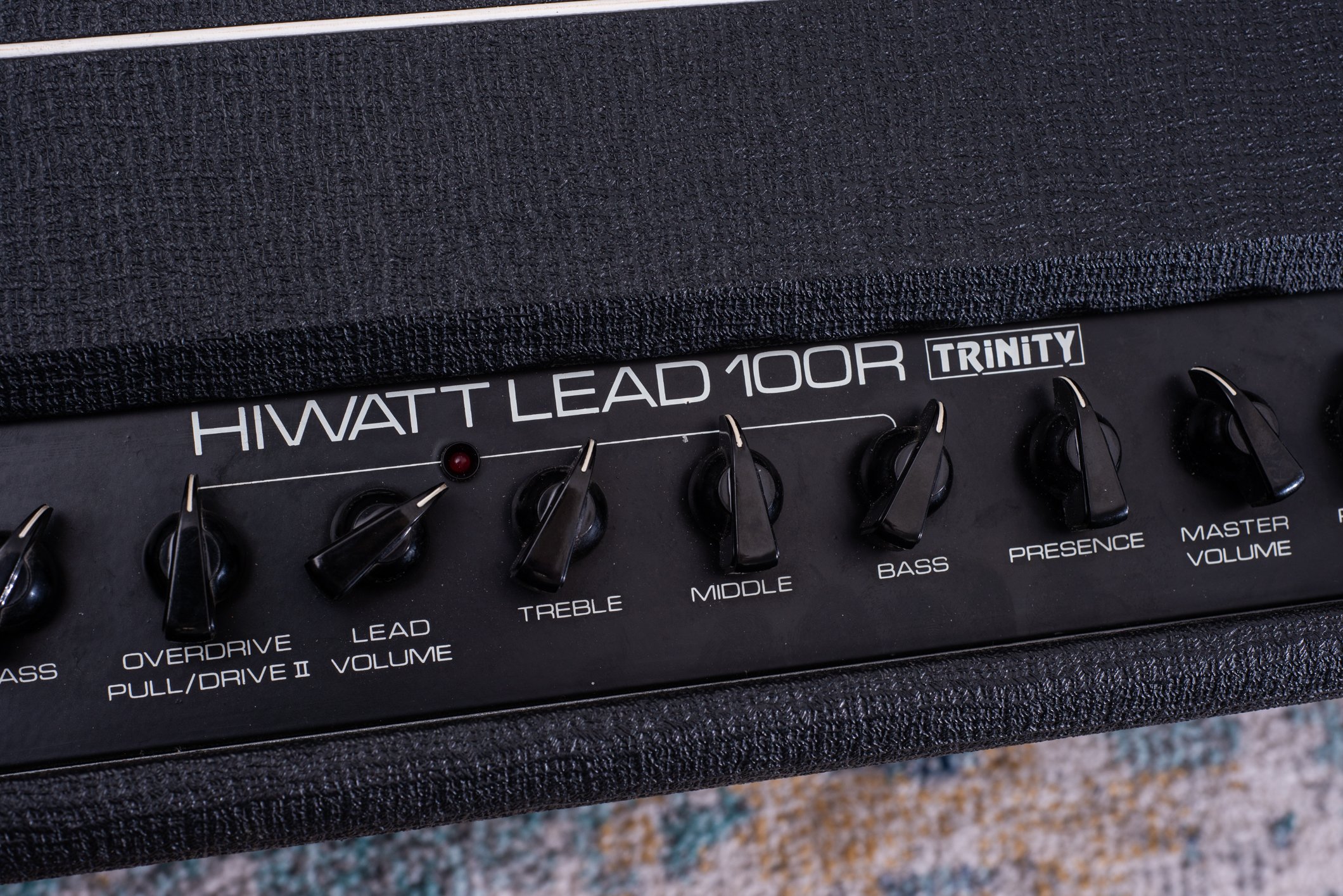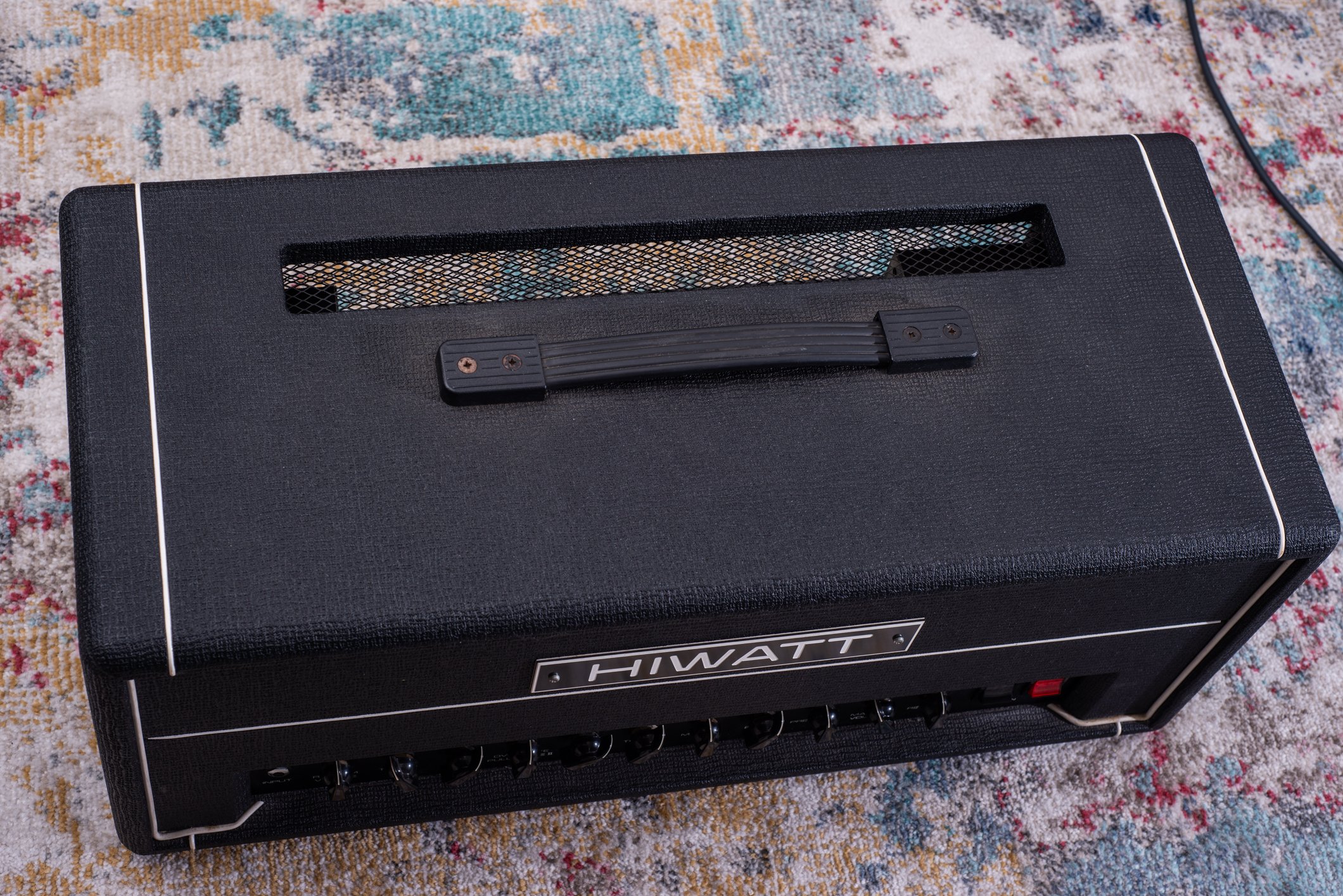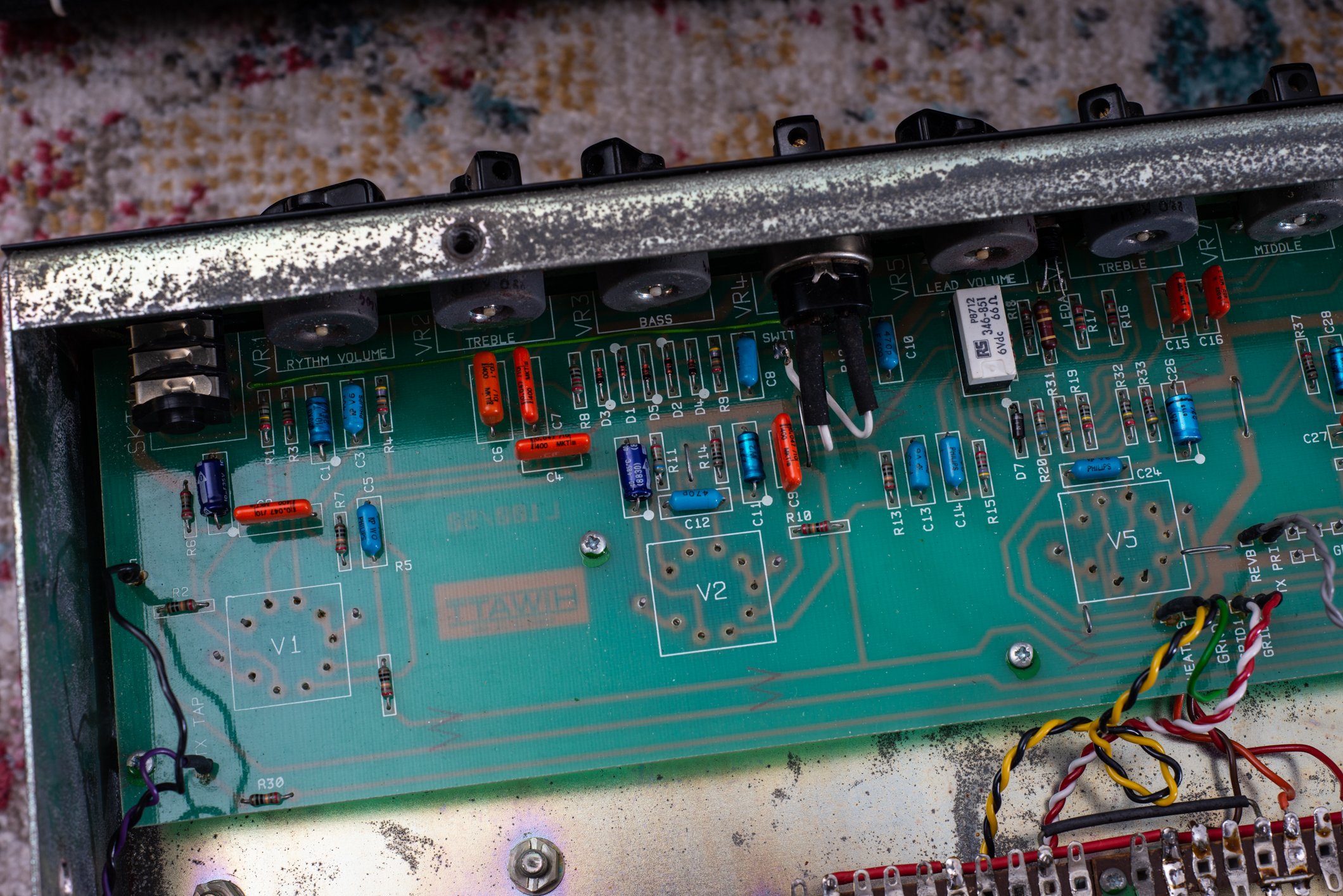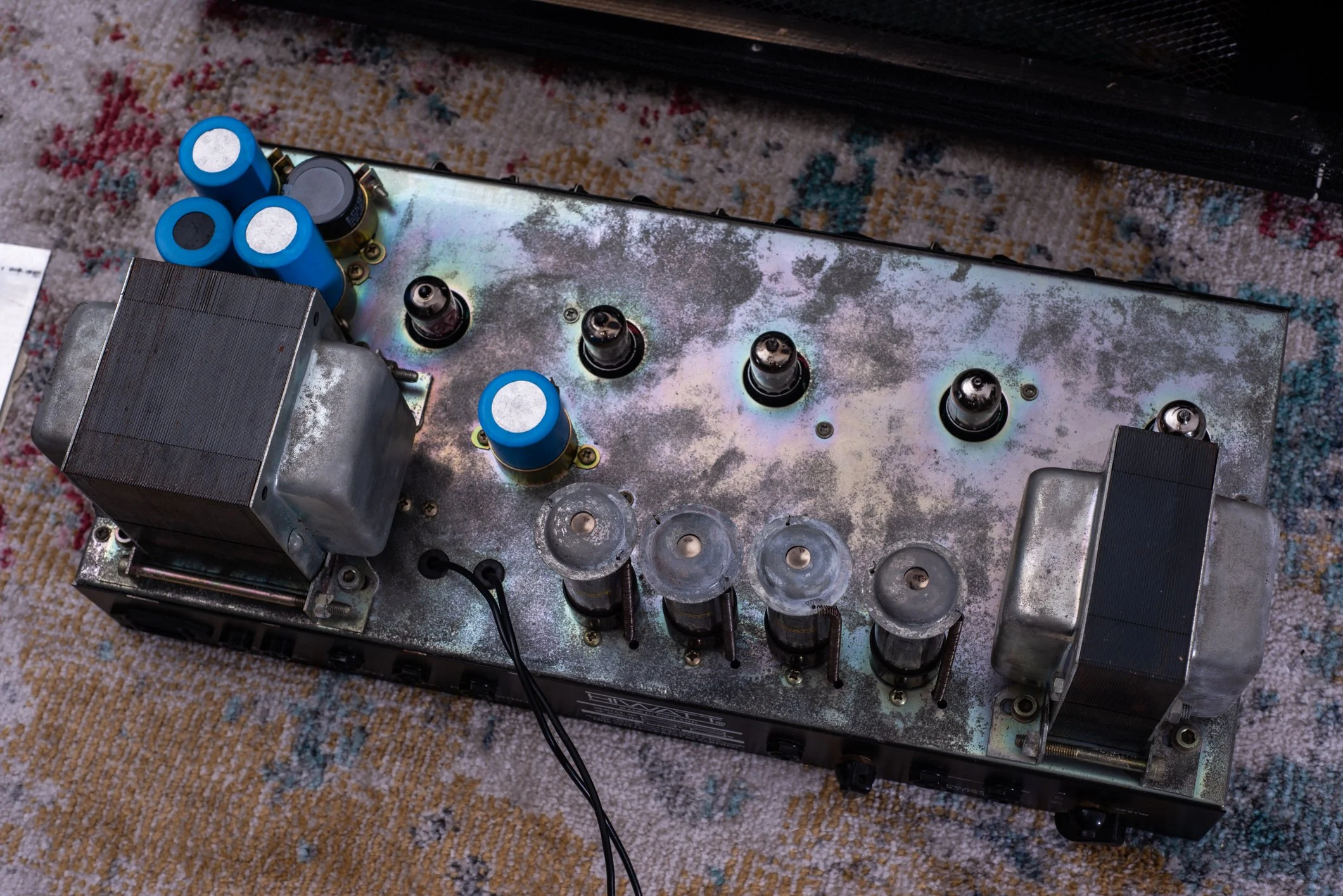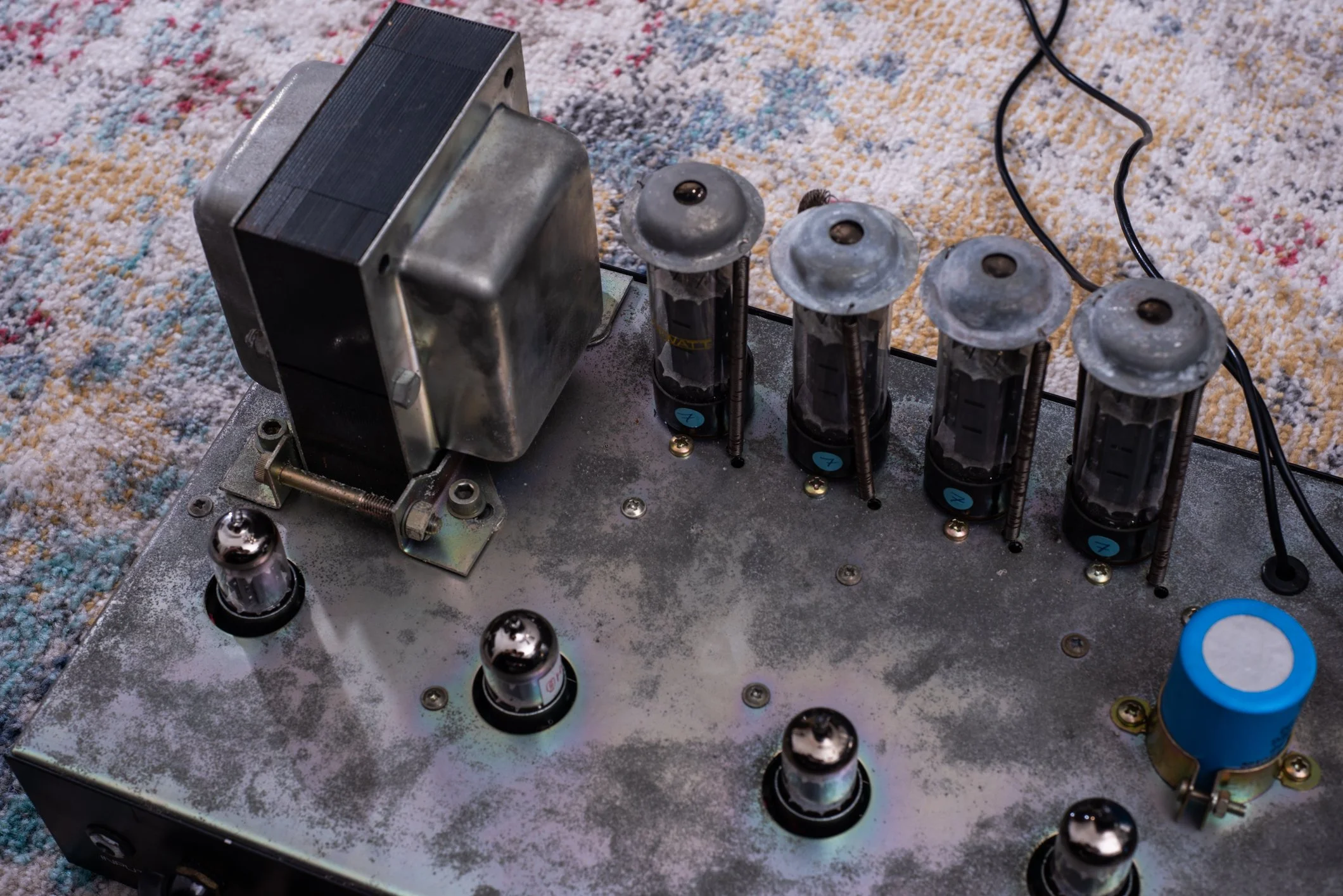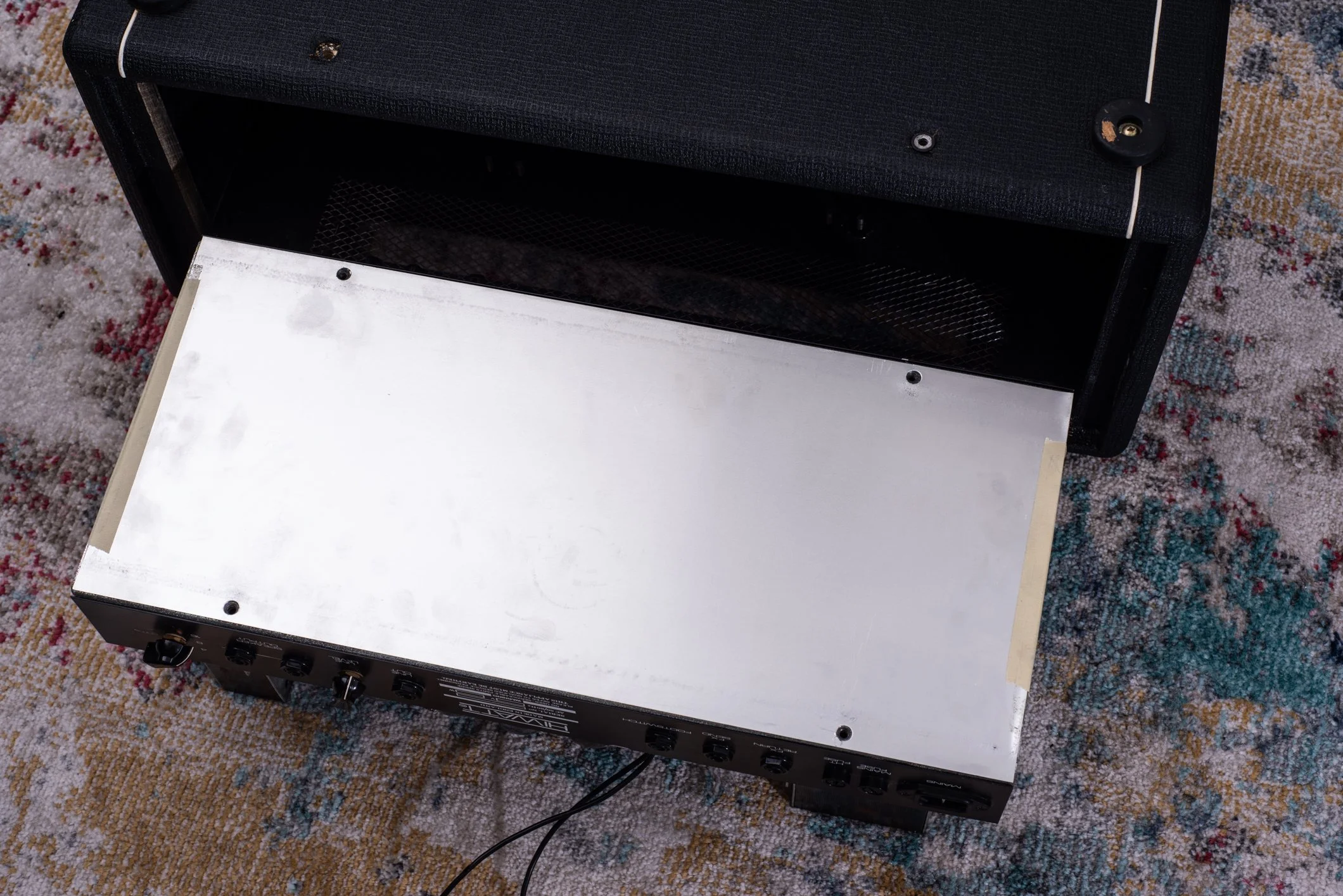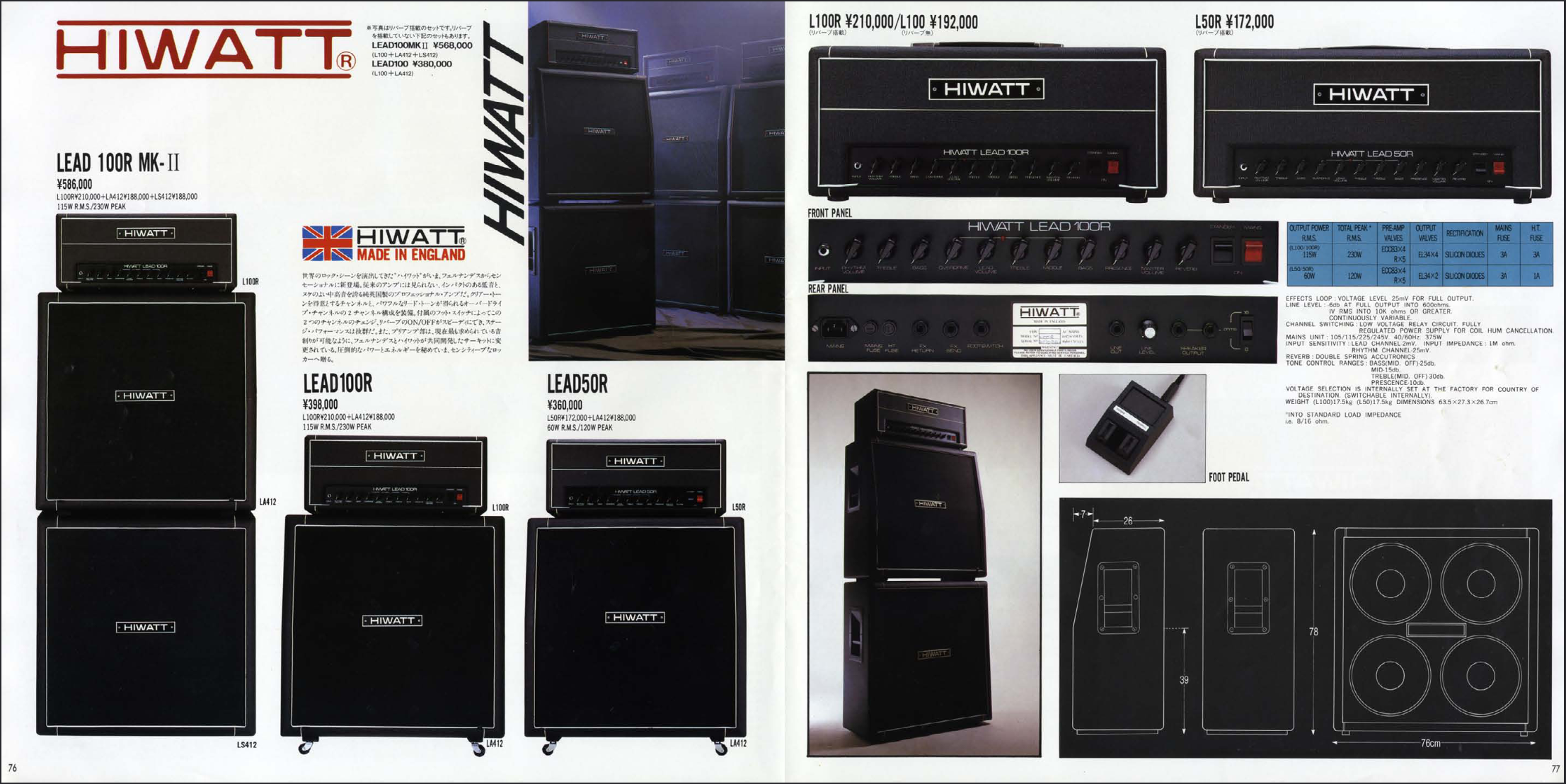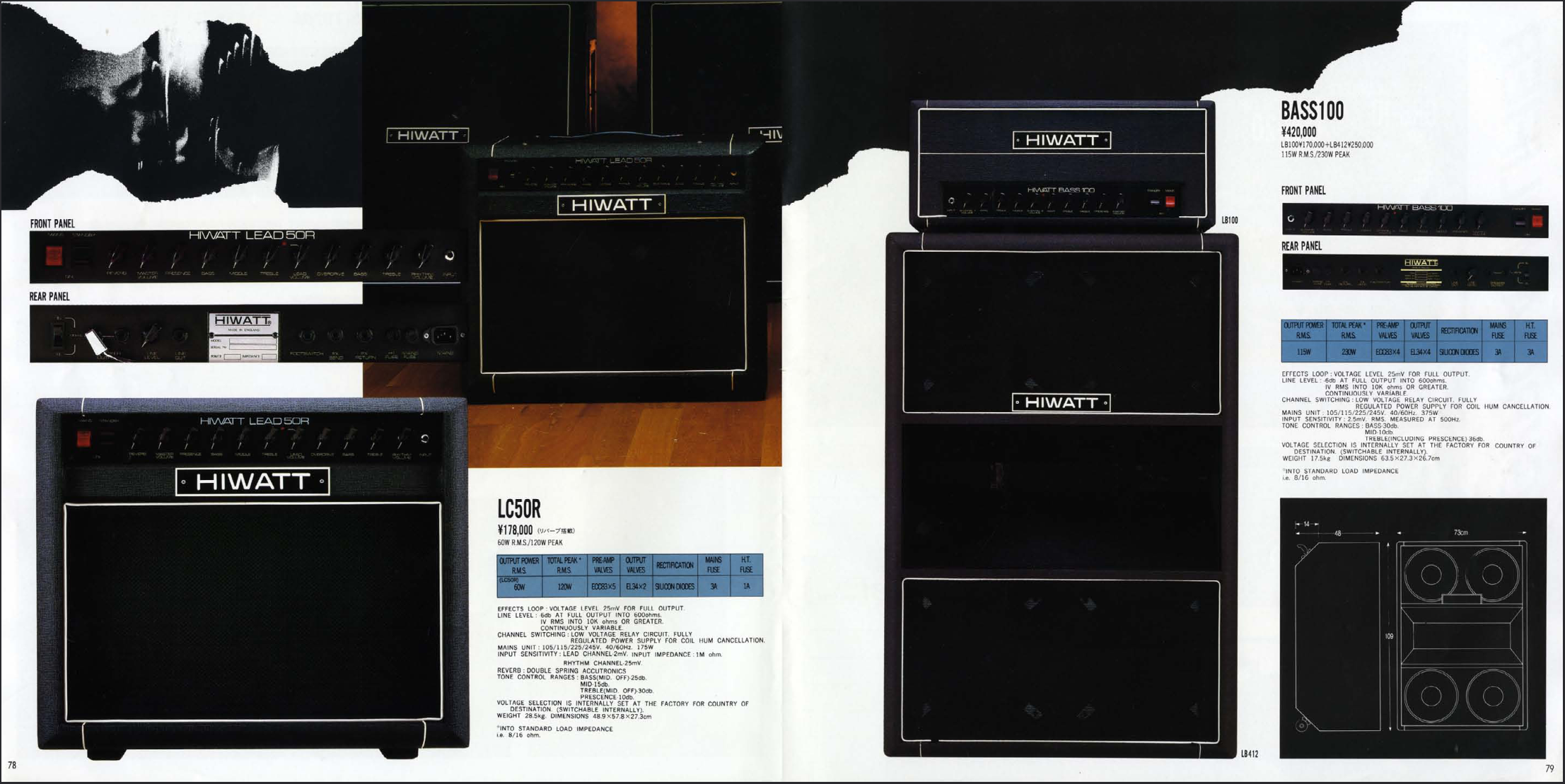1988 Hiwatt Lead 100R Trinity
Specs
2 Channels
100w Output
4x EL34 Power Tubes
5x 12AX7 Preamp tubes
Serial effects loop
Direct line output
Accutronics spring reverb
¥210,000 in 1988 (roughly ¥257,360 today, or $1,865)
Overview
This amp comes from the “Dark Ages” of Hiwatt’s Biacrown era, late in the 1980s while the Hiwatt name was under various disputes and possibly being manufacturer by who-knows-where. This particular type of amp actually appears (as the Lead 100R “Mk II”) in a Japanese market 1988 Fernandes advert (attached below), but that’s about as much information as I can possibly find about this amp.
The circuit design appears similar to the split-channel Marshall JCM800 amps (2205 and 2210 models) to my eye, with a diode clipping stage right after the third gain stage, before the EQ. However, I can’t even find a schematic of this “Trinity” version, only the standard Lead 50R/100R amps. The difference is that this amp has a pull “Drive II” mode on the overdrive control, but to my ear this actually seems to reduce the amount of gain. It’s hard to tell if this is the correct behavior on this amp, and who knows what mods it may have been through before it got to me.
I prefer it without the Overdrive pulled, and the Overdrive and Lead Volume controls are extremely interactive. By adjusting these two controls, the amp can go from a pretty close approximation of a very loud traditional Hiwatt tone all the way up to a more high gain sound, but it lacks the Marshall style “kerrang” in the upper mids, likely due to different values in the tone stack. This gives it a unique signature sound and I find some of the best tones are with the overdrive control set near the middle, but adjusting the amount of saturation and silkiness of playing with the lead volume control. Then, the final volume of the amp can be controlled from the Master Volume control.
There is also a “rhythm” channel, which is effectively a footswitchable clean mode, with much less gain. This channel can be made grittier by increasing the volume while lowering the master, but it’s hard to use it effectively that way without neutering the overdrive mode (which is the default when the amp is turned on and no footswitch connected - in fact, you can’t even use the Rhythm mode without a footswitch).
This amp also has a long-tank spring reverb which sounds very good. It’s also one of the longest spring reverb tanks I’ve ever seen in an amp, a full length 2-spring accutronics unit.
It may not be a true Hiwatt by purist standards, but I’m quite pleased with the tones I get out of this amp in the mid gain territory, or even boosted for some classic metal tones. I’m not trying to replicate 70s Hiwatt sounds with it however, and while I think it can do a passable job at that, it’s no substitute for a true DR103 or DR504 head.

